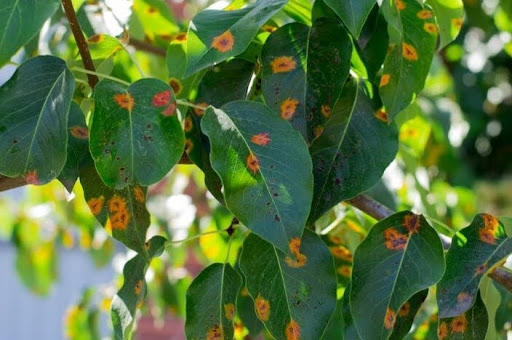Trees are a big part of Nashville’s beauty, providing shade, clean air, and enhancing property value. However, tree diseases can weaken or even kill trees, creating safety hazards and damaging the landscape. That’s why identifying signs of tree diseases early is essential to protect both your trees and your property.
Common Tree Diseases and Spot Signs To Look Out For
Oak Wilt
This is one of the most severe tree diseases affecting oak trees in the Nashville area. Oak Wilt is caused by a fungus that spreads through tree roots or insect activity.
The first sign is usually leaf discoloration, starting at the tips and edges, and then spreading inward. Leaves may curl and fall prematurely. The disease can quickly kill red oaks, so it’s important to act fast if you notice any changes.
Emerald Ash Borer
This is caused by an invasive beetle that targets ash trees. Not just in Nashville, it has caused widespread damage in many states. This pest tunnels into the bark, disrupting the tree’s ability to transport water and nutrients.
Common signs of this disease include thinning of the tree canopy, dying branches, D-shaped exit holes in the bark, etc. You may also notice vertical splits in the trunk. Woodpecker activity may also increase during this time.
Cedar-Apple Rust
It is a fungal disease that affects both cedar and apple trees. It causes yellow-orange spots on apple leaves and galls on cedar trees. The disease spreads between the two tree species.
In apple trees, you will notice signs like bright orange-yellow spots on leaves and early defoliation. On the other hand, it produces orange and jelly-like horns in cedar trees.
Dutch Elm Disease
Dutch Elm Disease is another fungal disease that targets elm trees. It spreads via bark beetles, which carry the fungus from tree to tree. Symptoms include yellowing and wilting of leaves, followed by defoliation.
Once infected, trees typically show symptoms in the upper branches first. However, the disease can spread throughout the tree within weeks.
Anthracnose
Anthracnose affects a variety of hardwood trees in Nashville, including sycamores and maples. It primarily targets leaves, causing blotchy, dark spots and sometimes leading to twig and leaf death. The disease thrives in cool, wet conditions, making it particularly problematic during rainy seasons.
Root Rot
This fungal disease is often caused by poor drainage or overwatering. Symptoms are less visible above ground at first. But trees may show signs of weakening, with drooping branches, poor growth, or unstable roots. The disease can slowly kill trees by cutting off their nutrient supply.
Managing and Treating Tree Diseases
Once you spot signs of a disease, swift action is necessary to stop its spread. Here are some key methods for managing tree diseases:
Pruning and Removal
Removing dead or diseased branches can prevent the disease from spreading further. This is especially important for highly contagious diseases.
Fungicide Treatments
For fungal infections, fungicide treatments can help control the disease. These should be applied by a professional, as improper use can damage the tree further.
Soil Management
Improving soil drainage can help prevent root damage and other diseases. If your tree’s soil is too wet, it may need aeration or adjustment in watering routines.
Protect Your Trees at All Costs!
Trees are an essential part of Nashville’s landscape, and keeping them healthy is key to preserving their beauty and longevity. However, if you’re unsure about the health of your trees, contacting a local tree service company is the best way to ensure that they are properly inspected and cared for. Nashville Tree Service offers professional inspections, treatments, and long-term care plans to keep your trees healthy all year round.

Recent Comments